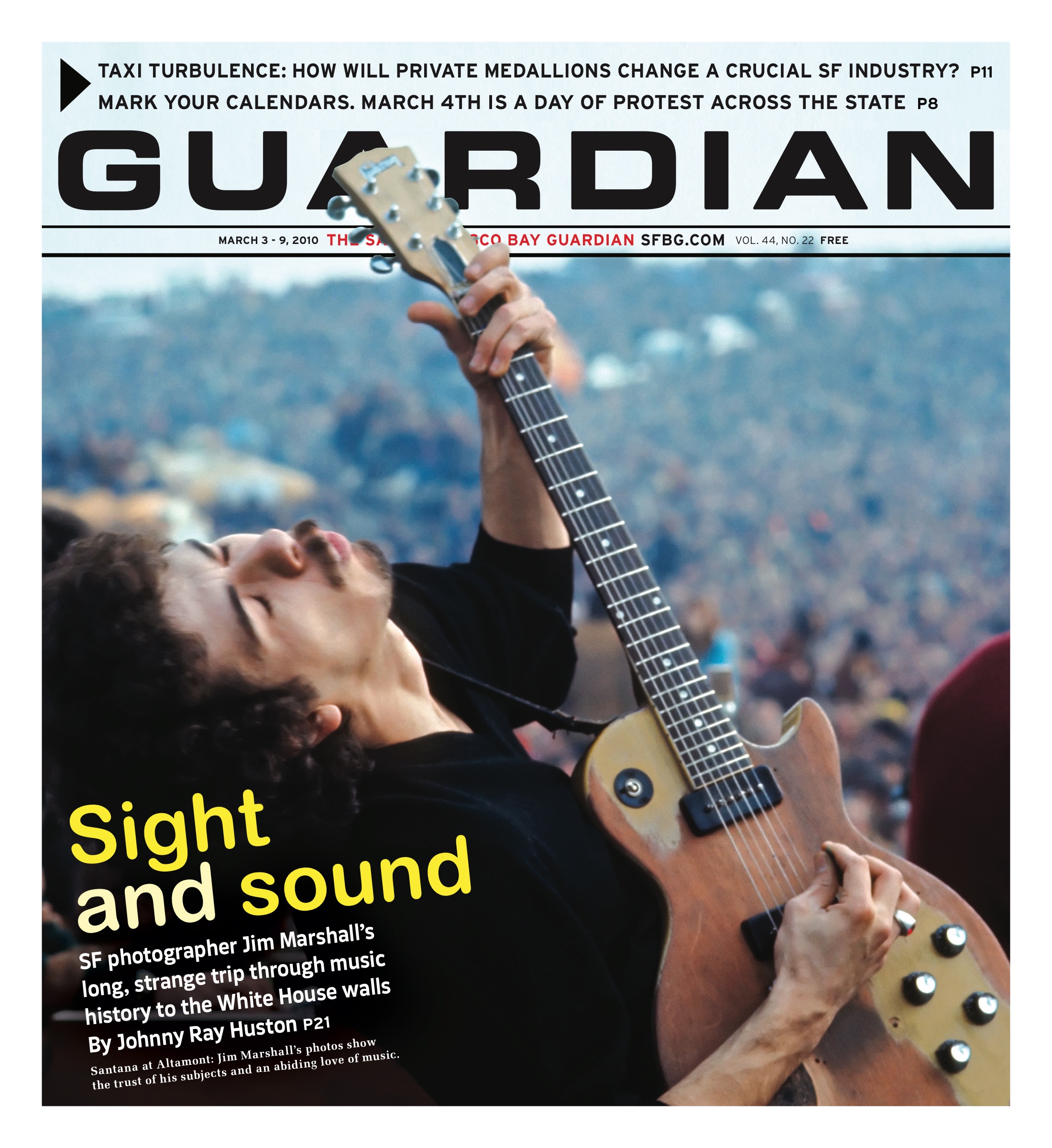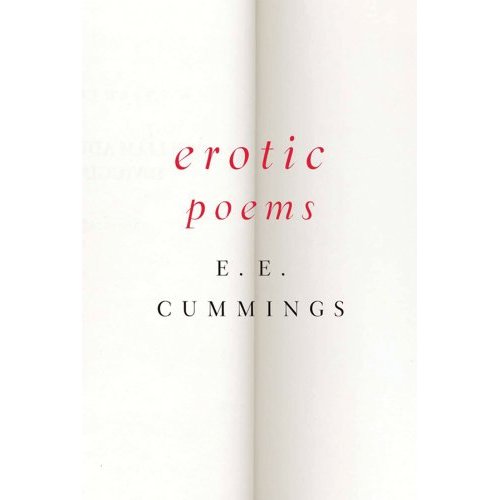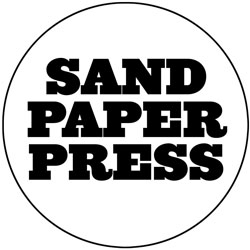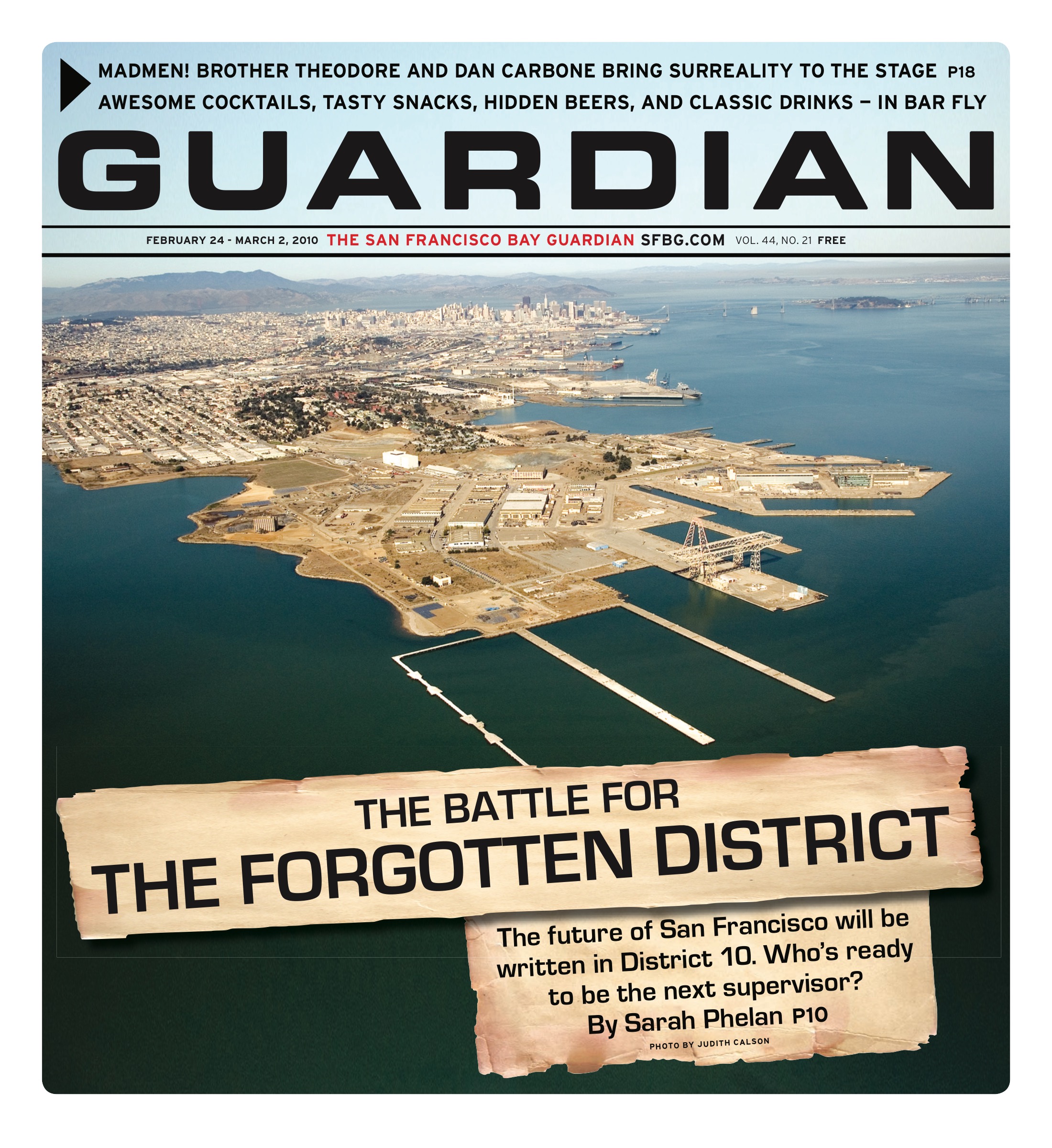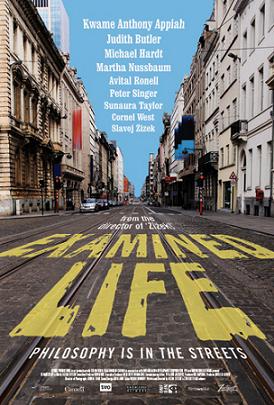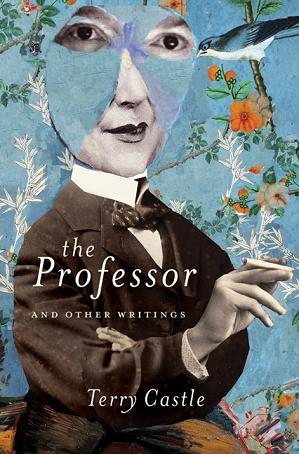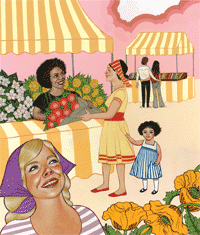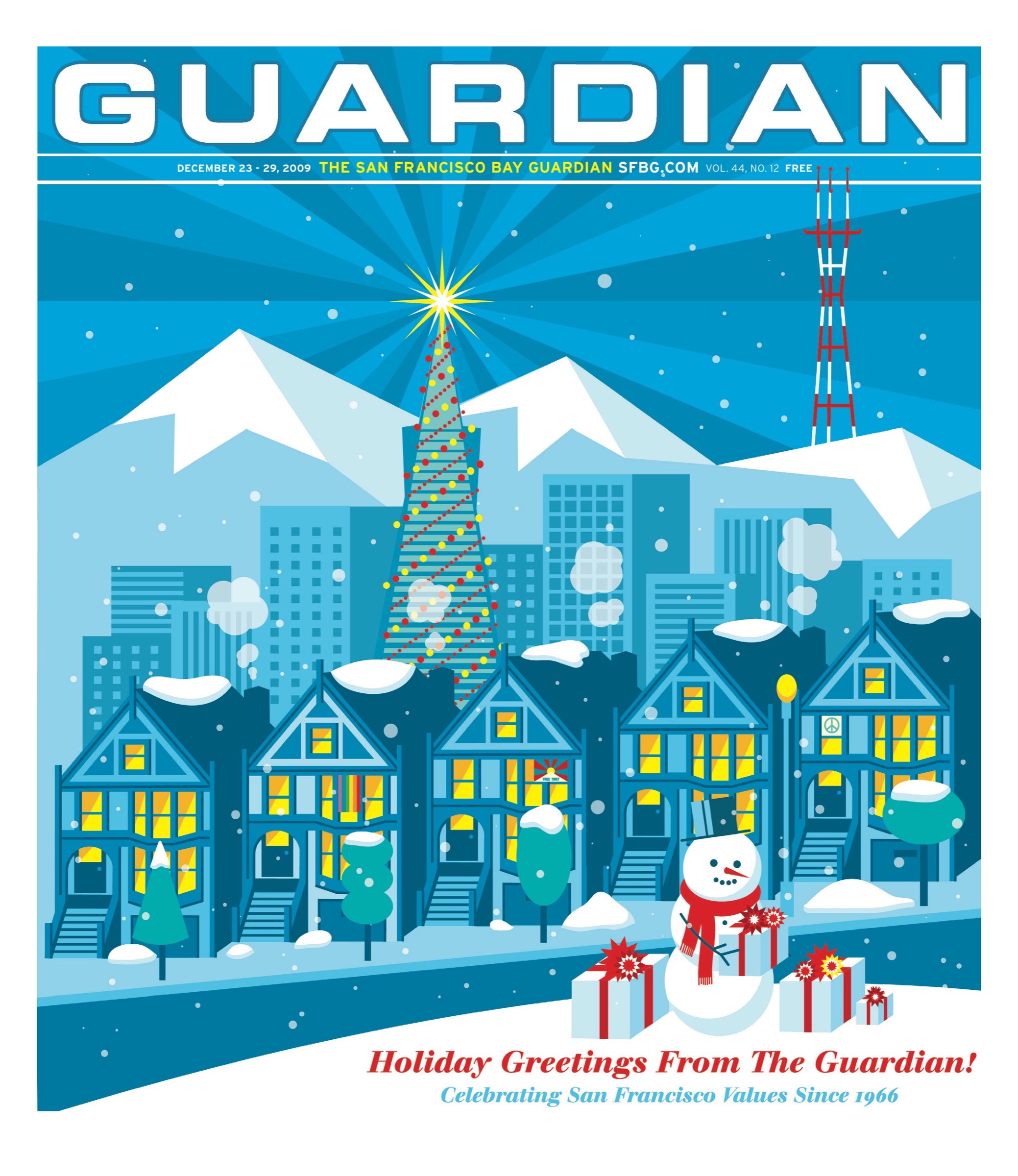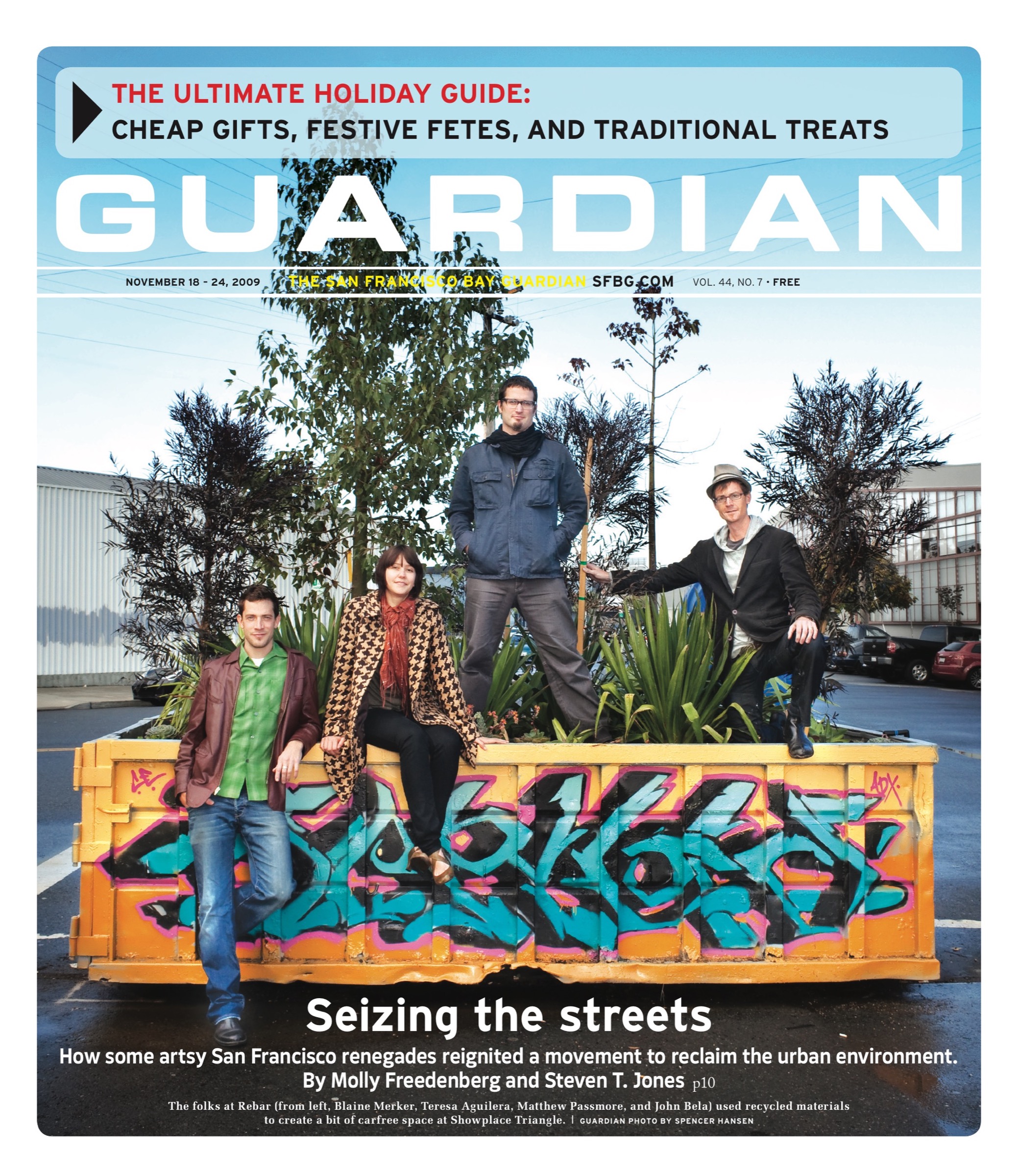BEST REP FILM HOUSE
Red Vic
From rock docs to cult classics, this Upper Haight co-op’s schedule has kept its cozy couches filled with popcorn-munching film buffs since 1980.
1727 Haight, SF. (415) 668-3994, www.redvicmoviehouse.com
Runners up: Castro, Roxie
BEST MOVIE THEATER
Balboa Theater
Packing the house with film festivals, second-run faves, indie darlings, and carefully chosen new releases, this Richmond gem offers old-school charm with a cozy neighborhood vibe.
3630 Balboa, SF. (415) 221-8184, www.balboamovies.com
Runners up: Castro, Kabuki Sundance
BEST THEATER COMPANY
Un-Scripted Theater Company
The Un-Scripted improv troupe elevates comedy from one-liners and shtick to full-fledged theatrical productions with a talented cast and eccentric sensibilities.
533 Sutter, SF. (415) 869-5384, www.un-scripted.com
Runners up: ACT, Shotgun Players
BEST DANCE COMPANY
Hot Pink Feathers
Blurring the line between cabaret and Carnaval, this burlesque troupe drips with samba flavor (and feathers, of course).
www.hotpinkfeathers.com
Runners up: DholRhythms, Fou Fou Ha!
BEST ART GALLERY
Creativity Explored
The cherished nonprofit provides a safe haven for artists of all ages, abilities, and skill levels while making sure that great works remain accessible to art lovers without trust funds.
3245 16th St., SF. (415) 863-2108, www.creativityexplored.org
Runners up: 111 Minna, Hang
BEST MUSEUM
De Young
Golden Gate Park’s copper jewel boasts stunning architecture, one hell of a permanent collection, and an impressive schedule of rotating exhibitions.
50 Hagiwara Tea Garden Drive, SF. (415) 750-3600, www.famsf.org/deyoung
Runners up: Asian Art Museum, SF MOMA
BEST MIXED-USE ARTS SPACE
CellSPACE
From aerial circus arts to metalsmithing, fire dancing to roller-skating parties, CellSPACE has had its fingers all over San Francisco’s alternative art scene.
2050 Bryant, SF. (415) 648-7562, www.cellspace.org
Runners up: SomArts, 111 Minna
BEST DANCE CLUB
DNA Lounge
DNA scratches just about every strange dance floor itch imaginable — from ’80s new wave and glam-goth to transvestite mashups and humongous lesbian dance parties.
375 11th St., SF. (415) 626-1409, www.dnalounge.com
Runners up: Temple, 1015 Folsom
BEST ROCK CLUB
Bottom of the Hill
San Francisco’s quintessential “I saw ’em here first” dive, Bottom of the Hill consistently delivers stellar booking, cheap drinks, and great sound.
1233 17th St., SF. (415) 621-4455, www.bottomofthehill.com
Runners up: Slim’s, The Independent
BEST HIP-HOP CLUB
Club Six
Six blurs the line between high and low, offering an upstairs lounge in which to see and be seen and a basement dance floor for those who want to show off their b-boy prowess.
60 Sixth St., SF. (415) 531-6593, www.clubsix1.com
Runners up: Poleng, Milk
BEST JAZZ CLUB
Yoshi’s
Nothing says “Bay Area” quite like Yoshi’s masterful combo of classic cocktails, inventive maki rolls, and world-class jazz acts.
510 Embarcadero West, Jack London Square, Oakl. (510) 238-9200; 1330 Fillmore, SF. (415) 655-5600; www.yoshis.com
Runners up: Jazz at Pearl’s, Biscuits and Blues
BEST SALSA CLUB
Cafe Cocomo
Smartly dressed regulars, smoking-hot entertainment, and plenty of classes keep the Cocomo’s floor packed with sweaty salsa enthusiasts year-round.
650 Indiana, SF. (415) 824-6910, www.cafecocomo.com
Runners up: El Rio, Roccapulco
BEST PUNK CLUB
Annie’s Social Club
The club maintains its cred by presciently booking on-the-rise punk and hardcore bands and adding a sprinkle of punk rock karaoke, photo-booth antics, and ’80s dance parties.
917 Folsom, SF. (415) 974-1585, www.anniessocialclub.com
Runners up: Thee Parkside, 924 Gilman
BEST AFTER-HOURS CLUB
Endup
Where the drunken masses head after last call, the aptly named Endup is probably the only club left where you can rub up against a fishnetted transvestite until the sun comes up. And after.
401 Sixth St., SF. (415) 646-0999, www.theendup.com
Runners up: Mighty, DNA Lounge
BEST HAPPY HOUR
El Rio
“Cash is queen” at this Mission haunt, but you won’t need much of it. El Rio’s infamous happy hour — which lasts five hours and begins at 4 p.m. — consists of dirt cheap drinks and yummy freebies.
3158 Mission, SF. (415) 282-3325, www.elriosf.com
Runners up: Midnight Sun, Olive
BEST DIVE BAR
500 Club
A mean manhattan might not be the hallmark of a typical dive, but just add in ridiculously low prices, well-worn booths, and legions of scruffy hipsters.
500 Guerrero, SF. (415) 861-2500
Runners up: Broken Record, Phone Booth
BEST SWANKY BAR
Bourbon and Branch
Mirrored tables, exclusive entry, fancy specialty cocktails, and a well-appointed library root this speakeasy firmly in “upscale” territory.
501 Jones, SF. (415) 346-1735, www.bourbonandbranch.com
Runners up: Red Room, Bubble Lounge
BEST TRIVIA NIGHT
Brain Farts at the Lookout
“Are you smarter than a drag queen?” Brain Fart hostesses BeBe Sweetbriar and Pollo del Mar ask every Wednesday at 7:30 p.m. at this gay hot spot. Maybe.
3600 16th St., SF. (415) 431-0306
Runners up: Castle Quiz (Edinburgh Castle), Trivia Night (Board Room)
BEST JUKEBOX
Lucky 13
Bargain drinks, a popcorn machine, and Thin Lizzy, Hank 3, Motörhead, and Iggy on heavy rotation: Lucky 13 never disappoints.
2140 Market, SF. (415) 487-1313
Runners up: Phone Booth, Lexington Club
BEST KARAOKE BAR
The Mint
It may be nigh impossible to get mic time at this mid-Market mainstay, but once you do, there are hordes of adoring (read: delightfully catty) patrons to applaud you.
942 Market, SF. (415) 626-4726, www.themint.net
Runners up: Encore, Annie’s Social Club
BEST CLUB FOR QUEER MEN
Bearracuda at Deco
Bears at the free buffet, bears on the massage table — bears, bears everywhere, but mostly on the dance floor at this big gay biweekly hair affair in the Tenderloin.
510 Larkin, SF. (415) 346-2025, www.bearracuda.com
Runners up: The Cinch, The Stud
BEST CLUB FOR QUEER WOMEN
Lexington Club
With a pool table, a rotating gallery of kick-ass art, and regular rock DJ nights, this beer-and-shot Mission dive has been proving that dykes drink harder for more than a decade.
3464 19th St., SF. (415) 863-2052, www.lexingtonclub.com
Runners up: Cockblock, Wild Side West
BEST CLUB FOR TRANNIES
Trannyshack
Say hello, wave good-bye: Heklina’s legendary trash drag mecca hangs up its bloody boa in August, but it’s still the best bang for your tranny buck right now.
Stud, 399 Ninth St., SF. (415) 252-7883, www.trannyshack.com
Runners up: AsiaSF, Diva’s
BEST SINGER-SONGWRITER
Curt Yagi
Multi-instrumentalist Curt Yagi has been making the rounds at local venues, strumming with the swagger of Lenny Kravitz and the lyrical prowess of Jack Johnson.
www.curtyagi.com
Runners up: Jill Tracy, Kitten on the Keys
BEST METAL BAND
A Band Called Pain
If you didn’t get the hint from their name, the Oakland-based A Band Called Pain bring it hard and heavy and have lent their distinct brooding metal sound to the Saw II soundtrack and Austin’s SXSW.
www.abandcalledpain.com
Runners up: Thumper, Death Angel
BEST ELECTRONIC MUSIC ACT
Lazer Sword
Rooted in hip-hop but pulling influences from every genre under the sun, the laptop composers seamlessly meld grime and glitch sensibilities with ever-pervasive bass.
www.myspace.com/lazersword
Runners up: Kush Arora, Gooferman
BEST HIP-HOP ACT
Beeda Weeda
Murder Dubs producer and rapper Beeda Weeda may make stuntin’ look easy, but he makes it sound even better: case in point, his upcoming album Da Thizzness.
www.myspace.com/beedaweeda
Runners up: Deep Dickollective, Zion I
BEST INDIE BAND
Ex-Boyfriends
San Francisco outfit and Absolutely Kosher artists the Ex-Boyfriends dole out catchy power pop with a shiny Brit veneer and a dab of emo for good measure.
www.myspace.com/exboyfriends
Runners up: Gooferman, Making Dinner
BEST COVER BAND
ZooStation
A mainstay at festivals, parties, and Slim’s cover-band nights, ZooStation storm through the U2 catalog (they take on more than 140 of the band’s tunes).
www.zoostation-online.com
Runners up: AC/DShe, Interchords
BEST BAND NAME
The Fucking Ocean
Fuck Buttons, Holy Fuck, Fucked Up, Fuck, indeed: the time is ripe for band names that can’t be uttered on the airwaves, and the Fucking Ocean leads the pack. George Carlin would be so proud.
www.myspace.com/thefuckingocean
Runners up: Stung, Gooferman
BEST DJ
Smoove
Ian Chang, aka DJ Smoove, keeps late hours at the Endup, DNA Lounge, 111 Minna, Mighty, and underground parties all over, pumping out power-funk breaks.
www.myspace.com/smoovethedirtypunk
Runners up: Jimmy Love, Maneesh the Twister
BEST PARTY PRODUCERS
Adrian and the Mysterious D, Bootie
Five years in, the Bay’s groundbreaking original mashup party, Bootie, has expanded coast-to-coast and to three continents. This duo displays the power of tight promotion and superb party skills.
DNA Lounge, 375 11th St., SF. (415) 626-1409, www.bootiesf.com
Runners up: NonStop Bhangra crew, Mike Gaines (Bohemian Carnival)
BEST BURLESQUE ACT
Twilight Vixen Revue
Finally, someone thinks to combine pirates, wenches, classic burlesque, and foxy lesbians. This all-queer burlesque troupe has been waving its fans (and fannies) since 2003.
www.twilightvixen.com
Runners up: Sparkly Devil, Hot Pink Feathers
BEST DRAG ACT
Katya Ludmilla Smirnoff-Skyy
Gorgeous costumes, a glamorous backstory, and a jam-packed social calendar are reasons enough to catch this opera diva, but it’s her flawless mezzo that keeps fans hurling roses.
www.russianoperadiva.com
Runners up: Charlie Horse, Cookie Dough
BEST COMEDIAN
Marga Gomez
One of America’s first openly gay comics, San Francisco’s Marga Gomez is a Latina firebrand who’s equally at home performing at Yankee Stadium or Theatre Rhinoceros.
www.margagomez.com
Runners up: Robert Strong, Paco Romane
BEST CIRCUS TROUPE
Vau de Vire Society
Offering a full-on circus assault, the wildly talented and freakishly flexible troupe’s live show delivers plenty of fire performances, aerial stunts, and contortionism.
www.vaudeviresociety.com
Runners up: Teatro Zinzani, Pickle Family Circus
BEST OPEN MIC NIGHT
Hotel Utah
One of the city’s strongest breeding grounds for new musical talent, Hotel Utah’s open mic series opens the floor for all genres (and abilities).
500 Fourth St., SF. (415) 546-6300, www.hotelutah.com
Runners up: Queer Open Mic (3 Dollar Bill), Brain Wash
BEST CABARET/VARIETY SHOW
 Hubba Hubba Review: Best Cabaret/Variety Show
Hubba Hubba Review: Best Cabaret/Variety Show
PHOTO BY PATRICK MCCARTHYHubba Hubba Revue
Vaudeville comedy, tassled titties, and over-the-top burlesque teasing make the Hubba Hubba Revue the scene’s bawdiest purveyor of impropriety.
www.hubbahubbarevue.com
Runners up: Bohemian Carnival, Bijou (Martuni’s)
BEST LITERARY NIGHT
Writers with Drinks
This roving monthly literary night takes it on faith that writers like to drink. Sex workers, children’s book authors, and bar-stool prophets all mingle seamlessly, with social lubrication.
www.writerswithdrinks.com
Runners up: Porchlight Reading Series, Litquake
BEST CRUSHWORTHY BARTENDER
Laura at Hotel Utah
Whether you just bombed onstage at open mic night or are bellied up to the Hotel Utah bar to drink your sorrows away, the ever-so-crushworthy Laura is there with a heavy-handed pour and a smile. She’s even nice to tourists — imagine!
500 Fourth St., SF. (415) 546-6300, www.hotelutah.com
Runners up: Chupa at DNA Lounge, Vegas at Cha Cha Cha
Nightlife and Entertainment — Editors Picks
BEST CREEP-SHOW CHANTEUSE
There’s just something about the inimitable Jill Tracy that makes us swoon like a passel of naive gothic horror heroines in too-tight corsets. Is it her husky midnight lover’s croon, her deceptively delicate visage, her vintage sensibilities? Who else could have written the definitive elegy on the “fine art of poisoning,” composed a hauntingly lush live score for F.W. Murnau’s classic silent film Nosferatu, joined forces with that merry band of bloodthirsty malcontents, Thrillpeddlers, and still somehow remain a shining beacon of almost beatific grace? Part tough-as-nails film fatale, part funeral parlor pianist, Tracy manages to adopt many facades yet remain ever and only herself — a precarious and delicious balancing act. Her newest CD, The Bittersweet Constrain, glides the gamut from gloom to glamour, encapsulating her haunted highness at her beguiling best.
www.jilltracy.com
BEST CINEMATIC REFUGE FOR GERMANIACS
Can’t wait for the annual Berlin and Beyond film fest to get your Teuton on? The San Francisco Goethe-Institut screens a select handful of German-language films throughout the year at its Bush Street language-school location. For a $5 suggested donation, you can treat yourself to a klassische F.W. Murnau movie or something slightly more contemporary from Margarethe von Trotta. Flicks are subtitled, so there’s no need to brush up on verb conjugations ahead of time. And the Bush Street location is within respectable stumbling distance of many Tendernob bars, not to mention the Euro-chic Café de la Presse, should your cinematic adventure turn into an unexpected Liebesabenteuer. Unlike SF filmic events offering free popcorn, free-for-all heckling, or staged reenactments of the action, Goethe-Institut screenings need no gimmickry to attract their audiences — a respectable singularity perhaps alone worth the price of admission.
530 Bush, SF. (415) 263-8760, www.goethe.de
BEST UNFORCED BAY AREA BALKANIZATION
Despite all the countless reasons to give in to despair — the weight of the world, the headline news, those endless measured teaspoons — sometimes you just have to say fuck it and get your freak on. No party in town exemplifies this reckless surrender to the muse of moving on better than the frenetic, freewheeling proslava that is Kafana Balkan. No hideaway this for the too-cool-for-school, hands-slung-deep-in-pockets, head-bobber crowd. The brass-and-beer-fueled mayhem that generally ensues at Kafana Balkan, often held at 12 Galaxies, is a much more primitive and fundamental form of bacchanal. Clowns! Accordions! Brass bands! Romany rarities! Unfurled hankies! The unlikely combination of high-stepping grannies and high-spirited hipsters is joined together by the thread that truly binds: a raucous good time. Plus, all proceeds support the Bread and Cheese Circus’s attempts to bring succor and good cheer to orphans in Kosovo. Your attendance will help alleviate angst in more ways than one.
www.myspace.com/kafanabalkan
BEST GOREY BALL
There’s no doubt about it — we San Franciscans love to play dress-up. From the towering Beach Blanket Babylon–esque bonnets at the annual Sisters of Perpetual Indulgence Easter Sunday to the costumed free-for-all of All Hallows Eve, the more elaborate the excuse to throw on some gay apparel, the more elaborate the apparel. This makes the annual Edwardian Ball tailor-made for San Francisco’s tailored maids and madcap chaps. An eager homage to the off-kilter imaginings of Edward Gorey, whose oft-pseudonymous picture books delved into the exotic, the erotic, and the diabolic within prim and proper, vaguely British settings, the Edwardian Ball is a midwinter ode to woe. From the haunting disharmonies of Rosin Coven to the voluptuous vigor of the Vau de Vire Society’s reenactment of Gorey tales, the ball — which now encompasses an entire three-day weekend — is a veritable bastion of dark-hued revelry and unfettered fetish.
www.myspace.com/edwardianball
BEST PROGRESSIVE LOUD ‘N’ PROUD
We love Stephen Elliott. The fearless writer, merciless poker opponent, and unrepentant romantic’s well-documented fall from political innocence — recounted in Looking Forward to It (Picador, 2004) and Politically Inspired (MacAdam/Cage, 2003) — has kept him plunged into the fray ever since. Like most other ongoing literary salons, Elliott’s monthly Progressive Reading Series offers a thrilling showcase of local and luminary talent, highlighting up-and-comers along with seasoned pros — shaken, stirred, and poured over ice by the unflappable bar staff at host venue the Make-Out Room. All of the proceeds from the door benefit selected progressive causes — such as, most recently, fighting the good fight against California state proposition 98. Books, booze, and ballot boxing — a good deed never went down more smoothly or with such earnest verbiage and charm.
www.progressivereadingseries.org
BEST UNDERAGE SANDWICH
When it comes to opportunities to see live independent music, most Bay Area venues hang kids under 21 out to dry. Outside of 924 Gilman in Berkeley and the occasional all-ages show at Bottom of the Hill, the opportunities are painfully sparse. But thanks to members of Bay Area show promotion collective Club Sandwich, the underground music scene is becoming more accessible. Committed to hosting exclusively all-ages shows featuring under-the-radar local and national touring bands, Club Sandwich has booked more than a hundred of them since 2006, ranging from better-known groups like No Age, Marnie Stern, and Lightning Bolt to more obscure acts like South Seas Queen and Sexy Prison. Club Sandwich shows tend to cross traditional genre boundary lines (noise, punk, folk, etc.), bringing together different subcultures within the Bay Area’s underground music scene that don’t usually overlap. And the collective organizes shows at wildly diverse venues: from legitimate art spaces like ATA in San Francisco and Lobot in Oakland to warehouse spaces and swimming pools.
www.clubsandwichbayarea.com
BEST BEER PONG PALACE
Pabst Blue Ribbon, American Spirits, track bikes, tattoos, stretchy jeans, slip-ons, facial hair, Wayfarers. Blah, blah, blah. If you live in the Mission — and happen to be between 22 and 33 years old — you see it all, every night, at every bar in the hood. Boooring. If you’re sick of all the hipster shit, but not quite ready to abandon the scene entirely, take a baby step over to the Broken Record, a roomy dive bar in the Excelsior that serves gourmet game sausage, gives away free beer every Friday(!), rents out Scrabble boards, and isn’t afraid to drop the attitude and get down with a goofy night of beer pong or a bar-wide foosball match. The cheap swill, loud music, and street art will make you feel right at home, but the Broken Record’s decidedly Outer Mission vibe will give you a much-needed respite from the glam rockers, bike messengers, “artists,” and cokeheads you have to hang out with back in cool country.
1166 Geneva, SF. (415) 255-3100
BEST VOLUPTUOUS VISIBILITY
Every June, the Brava Theater quietly morphs into the center of the known universe for queer women of color. And what a delectable center it is. Over the course of three days, the Queer Women of Color Film Festival, produced by the Queer Women of Color Media Arts Project, screens more than 30 works by emerging filmmakers for a raucously supportive audience — an audience that happens to be cute as all hell. In fact, some would call the festival the cruising event of the year for queer women of color. Of course, the films are worth scoping too. Students of QWOCMAP’s no-cost Filmmaker Training Program create most of the festival’s incredible array of humorous and sensitive films, which explore topics such as romance and family ties. For festivalgoers, this heady mixture of authentic representation, massive visibility, and community pride (all screenings are copresented with social justice groups) is breathtakingly potent. It’s no wonder a few love connections are made each fest. Want just a little more icing on that cake? All screenings are free.
(415) 752-0868, www.qwocmap.org
BEST DANCE-FLOOR FLICKS FIX
The San Francisco Film Society is best known for putting on America’s oldest film fest, the San Francisco Film Festival. But the organization also hosts a TV show, publishes an amazingly vibrant online magazine, and throws a slew of events throughout the year under its SF360 umbrella, a collection of organizations dedicated to covering film in San Francisco from all angles. There’s SF360 movie nights held in homes across the city, Live at the Apple Store film discussions, and special screenings of hard-to-see films held at theaters throughout the Bay Area. But our favorite SF360 shindig is its monthly SF360 Film+Club Night at Mezzanine, which screens underground films to a room of intoxicated cinephiles who are encouraged to hoot, holler, and at times — like during the annual R. Kelly Trapped in tha Closet Singalong — flex their vocal cords. Past Film+Club screenings have included a B-movie skate-film retrospective, prescreenings of Dave Eggers’s Wholphin compilations, and an Icelandic music documentary night, at which, we’ll admit, we dressed up like Björk.
www.sf360.org
BEST HORIZONTAL MAMBO ON HIGH
 Project Bandaloop: Best Horizontal Mambo on High
Project Bandaloop: Best Horizontal Mambo on High
PHOTO BY TODD LABY Normally when one mentions doing the horizontal mambo, nudges and winks ensue. But when Project Bandaloop gets together to actually do it, the group isn’t getting freaky, it’s getting wildly artistic — hundreds of feet up in the air. The aerial dance company creates an exhilarating blend of kinetics, sport, and environmental awareness, hanging from bungee cords perpendicular to tall building walls. The troupe is composed of climbers and dancers, who rappel, jump, pas de deux, and generally do incredibly graceful things while hoisted hundreds of feet up in the air. Founded in 1991 and currently under the artistic direction of Amelia Rudolph, Project Bandaloop’s company of dancer-athletes explores the cultural possibilities of simulated weightlessness, drawing on a complete circumferential vocabulary of movement to craft site-specific dances, including pieces for Seattle’s Space Needle and Yosemite’s El Capitan. (Once it even performed for the sheikh of Oman.) Now, if there were only a way to watch the rapturous results without getting a stiff neck.
(415) 421-5667, www.projectbandaloop.org
BEST YODELALCOHOL
From the sidewalk, Bacchus Kirk looks like so many other dimly lit San Francisco bars. Yet to walk inside is to step into a little bit of Lake Tahoe or the Haute-Savoie on the unlikely slopes of lower Nob Hill. With its raftered A-frame ceiling, warm wood-paneled walls, and inviting fireplace, the alpine Bacchus Kirk only needs a pack of bellowing snowboarders to pass as a ski lodge — albeit one that provides chocolate martinis, raspberry drops, and mellow mango cocktails rather than hot cocoa, vertiginous funicular rides, and views of alpenhorn-wielding shepherds. This San Francisco simulation of the après-ski scene is populated by a friendly, low-key crowd of art students, Euro hostelers, and diverse locals — no frosty snow bunnies here — drawn by the congenial atmosphere, the pool table, and that current nightlife rarity, a smoking room. Tasty drinks and lofty conversation flow freely: if you leave feeling light-headed, you won’t be able to blame it on the altitude.
925 Bush, SF. (415) 474-4056, www.bacchuskirk.org
BEST COCKTAILS WITH CANINES
Plenty of bars around town call themselves pooch-friendly — as if a pampered shih tzu housed in a Paris Hilton wannabe’s purse, its exquisitely painted paw-nails barely deigning to rest atop the bar, represents the be-all and end-all of canine cocktail companionship. The Homestead, however, goes the extra mile to make four-legged patrons of all shapes and sizes at home with its “open dog” policy. Permanently stationed below the piano is a water dish, and the bar is stocked with an ample supply of doggie treats. At slack times, the bartenders will even come out from behind the bar to dispense said treats directly to their panting customers. Talk about service! As for the bipeds, they will undoubtedly appreciate the Homestead’s well-worn 19th-century working-class-bar decor (complete with a potbellied stove!) and relaxed modern-day atmosphere. It’s the perfect spot to catch up with old friends — either furry or slightly slurry — and make a few new ones.
2301 Folsom, SF. (415) 282-4663
BEST VISA TO MARTINI VICTORY
 Bartender Visa Victor: Best Visa to Martini Victory
Bartender Visa Victor: Best Visa to Martini Victory
PHOTO BY NEIL MOTTERAMWhen überfancy personalized cocktails started popping up all over town, it was only a matter of time before we of the plebeian class started demanding our fair share. Looking to be poured something special, but can’t afford a drink at Absinthe? Want to sample a few stupendously constructed tipples in the Bourbon and Branch vein with limited ducats? Score: Visa Victor the bartender has what you want. Once a journeyman slinger, Visa has started filling regular shifts — typically Wednesdays and Sundays — at Argus Lounge on Mission Street. What he offers: his own DJ, a well-populated e-mail list of fans, and an array of unique ingredients including rare berries, savory herbs, and meat. Yes, meat — his recent bacon martini turned out to be not just an attempt to tap into the city’s growing “meat consciousness” but damn good to boot. And hey, we didn’t have to take out a phony second mortgage to down it.
BEST JAZZ JUKE
Pesky Internet jukeboxes are everywhere: any decent night out can be ruined by some freshly 21-year-old princess bumping her “birthday jam” incessantly. The old-school jukebox, on the other hand, has the oft-undervalued ability to maintain a mood, or at least ensure that you won’t be “bringing sexy back” 27 times in one evening. Aub Zam Zam in the Upper Haight maintains an exceptional jukebox chock-full of timeless blues, jazz, and R&B slices. Selections include Robert Johnson, Miles Davis, Louis Armstrong, Bessie Smith, Taj Mahal … the list of smooth crooners and delicate instrumentalists goes on and on. This is in perfect keeping with Aub Zam Zam’s rep as a mighty fine cocktail lounge, established in the 1940s. New owner Bob Clarke has made the place a lot more welcoming than it was in the days of notoriously tyrannical founder Bruno, who proudly boasted of 86ing 80 percent of the Zam Zam’s would-be customers. But Clarke’s kept at least one thing from Bruno’s days besides mouthwatering drinks: his favorite juke jams.
1633 Haight, SF. (415) 861-2545
BEST FUNNY UH-OH
It’s hard to tell if the entity known as Something with Genitals is a comedy act or a cultural experiment designed to monitor human behavior under unusual circumstances. Take, for example, the night one member of this duo, sometimes trio, of dudes made his way through the crowded Hemlock Tavern on cross-country skis. When he finally maneuvered himself onto the stage, the lights went out and the show was over. Sometimes no one gets onstage at all. Instead the audience gets treated to one of the group’s ingeniously simple short films, which are way better at summing up every one-night stand you’ve had than a regular joke with a punch line. Check out their video on MySpace of a guy who strikes up a conversation with a shrub on some Mission District street, invites it to a party, offers it a beer, asks it to dance, shares some personal secrets and heartfelt dreams, then proceeds to drunkenly fuck it, and you’ll wonder if they’ve been reading your diary. Funny uh-oh, not funny ha-ha.
www.myspace.com/somethingwithgenitals
BEST WEIRD EYE FOR WEIRD TIMES
Even if you’re not in the market for stock footage — the chief focus of Oddball Film + Video, which maintains an archive crammed with everything from World War II clips to glamour shots of TV dinners circa 1960 to images of vintage San Francisco street scenes — you can still take advantage of this incredible resource. Director and founder Stephen Parr loves film, and he loves the unusual; lucky for us, he also loves sharing his collection with the public. RSVPs are essential to attend screenings at the small space, which in recent months has hosted such programs as “Shock! Cinema,” a collection of hygiene and safety films (Narcotics: Pit of Despair) from bygone but no less hysterical eras, and “Strange Sinema,” featuring yet-to-be-cataloged finds from Oddball’s ever-growing library (a 1950s dude ranch promo, an extended trailer for 1972 porn classic Behind the Green Door). Other past highlights have included programs on sex, monkeys, India, and avant-gardists and nights with guest curators like Los Angeles “media ecologist” Gerry Fialka.
275 Capp, SF. (415) 558-8117, www.oddballfilm.com
BEST SWEET ISLE OF ROCK
It doesn’t get much sweeter, in terms of massive multistage music gatherings soaked with mucho cerveza and plenty of sunshine: looking out over the bay at our sparkling city from the top of a Ferris wheel as Spoon gets out the jittery indie rock on the main stage below. That was the scene at last year’s inaugural two-day Treasure Island Music Festival, a smooth-sailing dream of a musical event presented by the Noise Pop crew and Another Planet Entertainment. The locale was special — how often do music fans who don’t live or work on the isle ever get out to that human-made spot, a relic from the utopian era of “We can do it!” engineering and World’s Fairs. The shuttles were plentiful and zero emission. The food was reasonably priced, varied, and at times vegetarian. About 72 percent of the waste generated by the fest was diverted to recycling and composting. Most important, the music was stellar: primo critical picks all the way. This year’s gathering, featuring Justice, Hot Chip, and the Raconteurs, looks to do even better.
www.treasureislandfestival.com
BEST WHITE-HOT WALLS
Pristine walls couldn’t get much more white-hot than at Ratio 3 gallery. Chris Perez has a nose for talent — and an eye for cool — when it comes to programming the new space on Stevenson near SoMa. The curator has been on a particular roll of late with exhibitions by such varied artists as psychedelia-drenched video installationist Takeshi Murata, resurgent abstractionist Ruth Laskey, and utopian beautiful-people photog Ryan McGinley, while drawing attendees such as Mayor Gavin Newsom and sundry celebs to openings. Perez also has a worthy stable of gallery artists on hand, including local legend Barry McGee (whose works slip surprisingly well among recent abstract shows at the space), rough-and-ready sculptor Mitzi Pederson, op-art woodworker Ara Peterson, and hallucinatory dreamscape creator Jose Alvarez. Catch ’em while the ratio is in your favor.
1447 Stevenson, SF. (415) 821-3371, www.ratio3.org
BEST ON-SCREEN MIND WARP
When edgy director of programming Bruce Fletcher left the San Francisco Independent Film Festival (IndieFest), fans who’d relied on his horror and sci-fi picks were understandably a little worried. Fortunately, Fletcher’s Dead Channels: The San Francisco Festival of Fantastic Film proved there’s room enough in this town for multiple fests with an eye for sleazy, gory, gruesome, unsettling, and offbeat films, indie and otherwise. There’s more: this summer Dead Channels teamed up with Thrillpeddlers to host weekly screenings at the Grand Guignol theater company’s space, the Hypnodrome. “White Hot ‘N’ Warped Wednesdays” are exactly that — showcasing all manner of psychotronica, from Pakistani gore flick Hell’s Ground to culty grind house classics like She-Freak (1967). Come this October, will the Dead Channels fest be able to top its utterly warped Hump Day series? Fear not for the programming, dark-dwelling weirdos — fear only what’s on the screen.
www.deadchannels.com
BEST BACKROOM SHENANIGANS
Everyone knows when Adobe Books’ backroom art openings are in full swing: the bookstore is brightly lit and buzzing at an hour when most other literature peddlers are safely tucked in bed, the crowd is spilling onto the 16th Street sidewalk, and music might be wafting into the night. Deep within, in the microscopic backroom gallery, you might discover future art stars like Colter Jacobsen, Barbra Garber, and Matt Furie, as well as their works. Call the space and its soirees the last living relic of Mission District bohemia or dub it a San Francisco institution — just don’t try to clean it up or bring order to its stacks. Wanderers, seekers, artists, and musicians have found a home of sorts here, checking out art, bickering over the accuracy and comprehensiveness of the time line of Mission hipster connections that runs along the upper walls, sinking into the old chairs to hang, and maybe even picking up a book and paging through.
3166 16th St., SF. (415) 864-3936, adobebooksbackroomgallery.blogspot.com
BEST HELLO MUMBAI
 DJ Cheb i Sabbah at Bollyhood Café: Best Hello Mumbai
DJ Cheb i Sabbah at Bollyhood Café: Best Hello Mumbai
PHOTO BY NEIL MOTTERAM India produces more movies than any other place on the planet, although you’d scarcely know it from the few that make it stateside. But the American Bollywood cult is growing, and Indian pop culture is dancing its eye-popping way into San Francisco’s heart with invigorating bhangra club nights and piquant variations on traditional cuisine. Bollywood-themed Bollyhood Café, a colorful dance lounge, restaurant, and bar on 19th Street, serves beloved Indian street food–style favorites, with tweaked names like Something to Chaat About, Bhel “Hood” Puri, and Daal-Icious. The joint also delights fans of the subcontinent with nonstop Bollywood screenings and parties featuring DJs Cheb i Sabbah and Jimmy Love of NonStop Bhangra. The crowd’s cute, too: knock back a few mango changos or a lychee martini and prepare to kick up your heels with some of the warmest daals and smoothest lassis (har, har) this side of Mumbai.
3372 19th St., SF. (415) 970-0362, www.bollyhoodcafe.com
BEST POP ‘N’ CHILL
 Sheila Marie Ang at Bubble Lounge: Best Pop ‘N’ Chill
Sheila Marie Ang at Bubble Lounge: Best Pop ‘N’ Chill
PHOTO BY NEIL MOTTERAM When people get older and perhaps wiser, they begin to feel out of place in hipstery dive bars and tend to lose the desire to rage all night in sweaty dance clubs. But that doesn’t mean they don’t want to party; it just means they’d rather do it in a more sophisticated setting. Thank goddess, then, for Bubble Lounge, the Financial District’s premier purveyor of sparkling social lubricant. For a decade, this superswanky champagne parlor has dazzled with its 10 candlelit salons, each decked out with satin couches, overstuffed chairs, and mahogany tables. BL specializes in tasters, flights, and full-size flutes of light and full-bodied sparkling wines and champagnes. But if poppin’ bub ain’t your style, you can always go the martini route and order a specialty cocktail like the Rasmatini or the French tickler — whatever it takes to make you forget about the office and just chill.
714 Montgomery, SF. (415) 434-4204, www.bubblelounge.com
BEST REGGAE ON BOTH SIDES
Reggae may not be the hippest or newest music in town, but there are few other genres that can inspire revolutionary political thought, erase color lines, and make you shake your ass all at the same time. Grind away your daily worries and appreciate the unity of humanity all night long on both sides of the bay — second Saturdays of the month at the Endup and fourth Saturdays at Oakland’s Karibbean City — at Reggae Gold, the Bay Area’s smoothest-packed party for irie folk and dance machines. Resident DJs Polo Moquuz, Daddy Rolo, and Mendoja spin riddim, dancehall, soca, and hip-hop mashup faves as a unified nation of dub heads rocks steady on the dance floor. Special dress-up nights include Flag Party, Army Fatigue Night, and the Black Ball, but otherwise Reggae Gold keeps things on the classy side with a strict dress policy: no sneakers, no baseball caps, no sports attire, and for Jah’s sake, no white T-shirts. This isn’t the Dirty South, you know.
www.reggaegoldsf.com
BEST MEGACLUB REINCARNATION
Its a wonder no one thought of it before. Why not combine green business practices with a keen sense of after-hours dance floor mayhem, inject the whole enchilada with shots of mystical spirituality (giant antique Buddha statues, a holistic healing center) and social justice activism (political speaker engagements, issue awareness campaigns), attach a yummy Thai restaurant, serve some fancy drinks, and call it a groundbreaking megaclub? That’s a serviceably bare-bones description of Temple in SoMa, but this multilevel, generously laid out mecca for dance music lovers is so much more. Cynical clubgoers like ourselves, burnt out on the steroidal ultralounge excesses of the Internet boom, cast a wary eye when it was announced that Temple would set up shop in defunct-but-still-beloved club DV8’s old space, and feared a mainstream supastar DJ onslaught to cover the costs. Temple brings in the big names, all right, but it also shows much love for the local scene, giving faves like DJ David Harness and the Compression crew room to do their thing. The sound is impeccable, the staff exceedingly friendly, and even if we have to wade politely but firmly through some bridge and tunnel crowd to get to the dance floor, we can use the extra karma points.
540 Howard, SF. www.templesf.com
BEST BANGERS AND FLASH
 Blow Up: Best Bangers and Flash
Blow Up: Best Bangers and Flash
PHOTO BY MELEKSAH DAVID Disco, house, techno, rave, hip-hop, electroclash … all well and good for us old-timers who like to stash our pimped-out aluminum walkers in the coat check and “get wild” on the dance floor. But what about the youth? With what new genre are they to leave their neon mark upon nightlife? Which party style will mark their generation for endless send-ups and retro nights 30 years hence? The banger scene, of course, fronting a hardcore electro sound tinged with sweet silvery linings and stuttery vocals that’s captured the earbuds and bass bins of a new crop of clubbers. Nowhere are the bangers hotter (or younger) than at the sort-of weekly 18-and-over party Blow Up at the Rickshaw Stop, now entering its third year of booming rapaciousness. Blow Up, with resident DJs Jeffrey Paradise and Richie Panic and a mindblowing slew of globe-trotting guests, doesn’t just stop with killer tunes — almost all of its fabulously sweat-drenched, half-dressed attendees seem to come equipped with a digital camera and a camera-ready look, as befits the ever-online youth of today. Yet Blow Up somehow leaves hipper-than-thou attitude behind. Hangovers, however, often lie ahead.
www.myspace.com/blow_up_415
BEST SCRIBBLER SMACKDOWN
It may not be the Saudi tradition of dueling poets, in which two men swap lines until one can’t think of any more couplets (and is severely punished), but the Literary Death Match series, put on by Opium magazine, is San Francisco’s excellent equivalent, though perhaps less civilized. Try to remember the last poetry reading you attended. Tweedy professors and be-sweatered Mary Oliver acolytes, right? Literary Death Match is not this mind-numbing affair. It’s competitive. It’s freaking edge-of-your-seat. And everyone’s drunk. Readers from four featured publications, either online or in print, do their thing for less than 10 minutes, and guest “celebrity” judges rip participants apart based on three categories: literary merit, performance, and “intangibles” (everything in between). Two finalists duke it out to the literary death until one hero is left standing, unless she or he’s been hitting up the bar between sets. Who needs reality television when we’ve got San Francisco’s version — one in which literary aspirations breed public humiliation, with the possibility of geeky bragging rights afterward?
Various locations. www.literarydeathmatch.com
BEST MISTRESS OF MOTOWN
Drag queens — is there nothing they can’t make a little brighter with their glittering presence? Squeeze a piece of coal hard enough between a perma-smiley tranny’s clenched cheeks and out pops cubic zirconium, dripping with sparkling bon mots. Yet not all gender illusionists go straight for ditzy comic gold or its silver-tongued twin, cattiness. Some “perform.” Others perform. And here we must pause to tip our feathery fedora to she who reps the platinum standard of awe-inspiring cross-dressing performance: Miss Juanita More. No mere Streisand-syncher, class-act Juanita dusts off overlooked musical nuggets of the past and gives them their shiny due. Despite punk-rock tribute trends and goth night explosions, Juanita’s focus stays primarily, perfectly, on that sublime subcultural slice of sonic history known formerly as “race music” and currently as R&B. Her dazzling production numbers utilize large casts of extras, several acts, and impeccable costumery that pays tribute to everything from Scott Joplin’s ragtime to Motown’s spangled sizzle, dirty underground ’70s funk to Patti LaBelle’s roof-raising histrionics. When she’s on spliff-passing point, as she so often is, her numbers open up a pulse-pounding window into other, more bootyful, worlds.
www.juanitamore.com
BEST AMBASSADORS OF DREAD BASS
That cracked and funky dubstep sound surged through Clubland’s speakers last year, an irresistible combination of breakbeats energy, dub wooziness, sly grime, intel glitch, and ragga relaxation. Many parties took the sound into uncharted waters, infusing it with hip-hop hooks, Bollywood extravaganza, roots rock swing, or “world music” folksiness. But only one included all those variations simultaneously, while pumping local and international live acts, fierce visuals, multimedia blowouts, and an ever-smiling crowd of rainbow-flavored fans: Surya Dub, a monthly lowdown hoedown at Club Six. The Surya crew, including perennial Bay favorites DJ Maneesh the Twister and Jimmy Love, and wondrous up-and-comers like Kush Arora, Kid Kameleon, DJ Amar, Ripley, and MC Daddy Frank on the mic, describes its ass-thumping sound as “dread bass,” which moves beyond wordy genre description into a cosmic territory the rumble in your eardrums can surely attest to. Surya Dub keeps it in the community, too, helping to promote a growing network of citywide dubstep events and spreading their dread bass gospel with parties in India.
www.suryadub.com
BEST HELLA GAY BEST OF THE BAY
Very few things in this world are gay enough to warrant the Nor Cal Barney modifier “hella,” but for tattooed karaoke-master Porkchop’s sort-of-monthly series at Thee Parkside, Porkchop Presents, the term seems an understatement. At least three times a season, the mysterious Porkchop gathers her posse of scruffy boozehounds and butt-rockin’ hipsters to the best little dive bar in Potrero for a daylong celebration of the gayest shit on earth. Past events have included Hella Gay Karaoke, Hella Gay Jell-O Wrestling, a Hella Gay Beer Bust, and the all-encompassing nod to gaydom, Something Hella Gay, an ongoing event during which gay folks go drink-for-drink to see who’s the gayest of them all. Join Porkchop and her crew of lowbrow beer snobs at Thee Parkside for arm wrestling competitions, tattoo-offs, and hella gay sing-along battles. You probably won’t win anything because the competition is so stiff and the rules are so lax, but you can rest assured that the smell of stale cigarettes, cheap beer, and sweaty ass will stay in your clothes for at least a week after the show. And that’s all that really matters, isn’t it?


